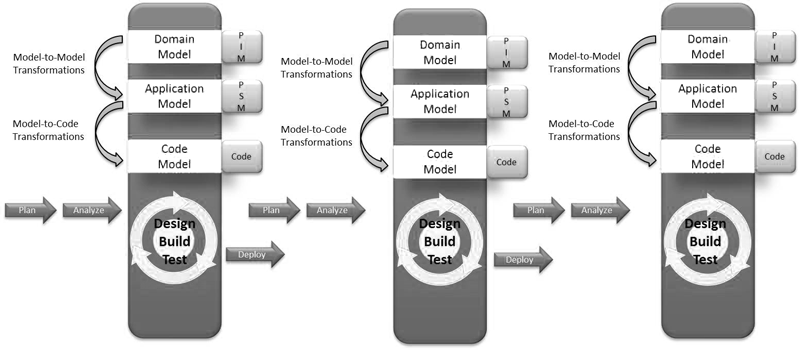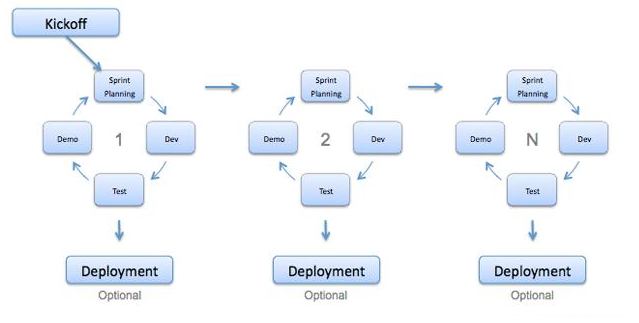Introduction to software development life cycle (SDLC)
Chapters
Agile Model
Agile model is a type of Incremental model points on adaptability process and customer satisfaction by quick delivery of product to the customer. In this model the application is divided into small incremental builds and these builds are given in iterations. Each iteration time duration is about one to three weeks. The iteration contains cross functional teams working parallel on many areas such as requirements analysis, planning, design, coding, unit testing, and UAT. A working product is displayed to the customer at the end of the iteration. Customer is actively involved because after every sprint there will be UAT(User Acceptance Testing).
Agile Model Diagrams:

Diagram 1

(Diagram 2)
- Kickoff: It is a meeting done at beginning stage of the project.
- Scrum Master: Team lead who is responsible for product development. Scrum master explains the requirement to the team and team identifies their task
- Sprint: It is a time taken to develop certain set of requirement is called sprint.
When to use:
- Whenever customer new changes are needed to be implemented
- Whenever customer need the project very early
- When there is complex project
Advantages of Agile model:
- Develops the product at very high speed
- Quality of product can be delivered due to frequent customer interaction
- More clarity in requirement
- Less communication gap between team members
- Regular adaptation to changing circumstances.
- Requirement changes are allowed
- Daily support between business team and developers.
Disadvantages:
- Very tight schedule for team members
- If two/more members are off then it will lead to project failure
- The project can take off track if the customer is not clear about his requirement / outcome.
- It needs only experienced resources
In next chapter we will explore some free videos from Youtube to take your learning and understanding of SDLC to next level
Description
This tutorial covers
- What is SDLC
- Waterfall Model
- Spiral Model
- Prototype Model
- V-Model
- Iterative model
- Big Bang Model
- RAD Model
- Agile Model
- Useful resources to futher your understanding on SDLC
Report any errata directly using our support forms
Audience
Beginners looking to get their hands on understanding of software development life cycle (SDLC)
Learning Objectives
A quick introduction to SDLC
Author: Subject Coach
Added on: 30th Jul 2015
You must be logged in as Student to ask a Question.
None just yet!